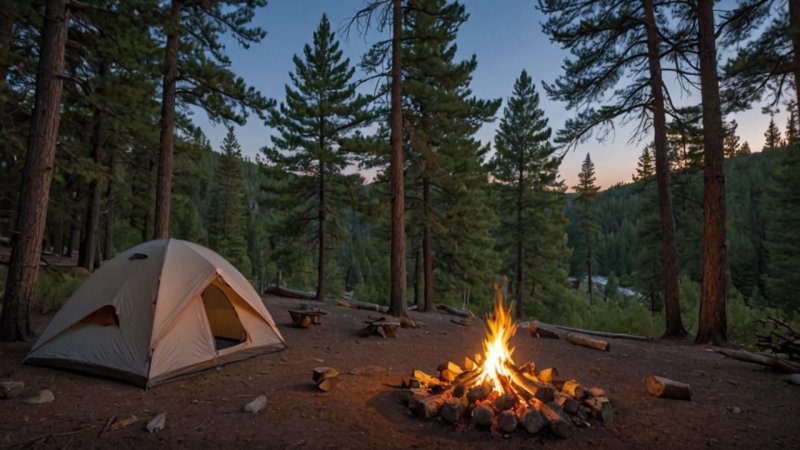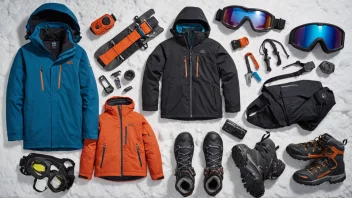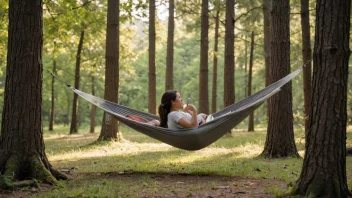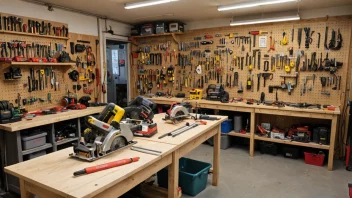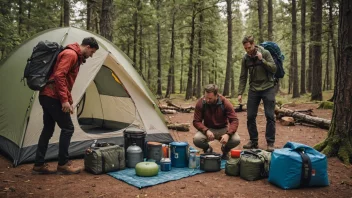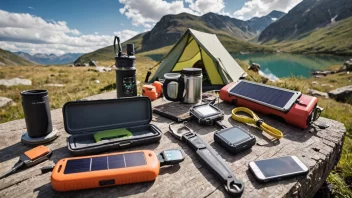Camping in the great outdoors can be an exhilarating experience, allowing you to connect with nature, unwind from the daily grind, and create lasting memories. However, setting up camp in the wild requires careful planning and execution to ensure both safety and enjoyment. This article will explore best practices for setting up camp, covering everything from site selection to gear organization and campfire safety. Whether you are a seasoned camper or a novice adventurer, this guide will equip you with the knowledge needed to set up camp efficiently and responsibly.
Choosing the Right Campsite
The first step in setting up camp in the wild is selecting the perfect campsite. A good campsite not only enhances your experience but also ensures your safety and minimizes your impact on the environment. Here are some factors to consider when choosing your campsite:
- Proximity to water: Find a site that is near a water source but at least 200 feet away to prevent contamination.
- Flat and dry terrain: Look for a flat area that is free of rocks and debris. Avoid low spots that may collect rainwater or be prone to flooding.
- Sunlight and shade: Consider how much sunlight the area gets during the day. Having some shade can be a welcome relief during hot days, while morning sunlight can help dry out dew.
- Wind protection: If possible, choose a site that is sheltered from strong winds, which can make your camping experience uncomfortable.
- Wildlife considerations: Be aware of the local wildlife. Avoid setting up camp near animal trails, nests, or other signs of wildlife activity.
Setting Up Your Tent
Once you’ve selected your campsite, it’s time to set up your tent. Here are some best practices to ensure your tent provides maximum comfort and protection:
- Read the manual: Before setting up your tent, familiarize yourself with the instructions. Each tent is different, and knowing how it works will save time and frustration.
- Clear the area: Remove rocks, sticks, and other debris from the tent footprint. This will help protect the tent floor from damage and provide a more comfortable sleeping surface.
- Use a footprint: If available, use a ground tarp or tent footprint to provide an extra layer of protection against moisture and abrasions.
- Secure the tent: Make sure to stake down your tent properly, especially in windy conditions. Use guy lines for additional stability.
- Ventilation: Open vents and windows to promote airflow, which can help reduce condensation inside the tent.
Organizing Your Gear
Keeping your campsite organized can significantly enhance your camping experience. Here are some tips for effective gear organization:
- Designate zones: Create specific areas for cooking, sleeping, and lounging. This will help maintain order and prevent accidents.
- Use gear bins: Store gear in waterproof bins or bags to keep everything organized and protected from the elements.
- Label everything: Consider labeling your gear bins. This makes it easier to find what you need without rummaging through all your equipment.
- Keep it off the ground: Store backpacks and clothing off the ground to avoid moisture and dirt. Use tree branches or designated gear hooks.
Cooking and Food Safety
Food preparation and safety are crucial elements of camping. Here are some essential tips for cooking and storing food while in the wild:
- Use a camp stove: A portable camp stove is a safe and efficient way to cook meals. Avoid open fires when possible, especially in dry conditions.
- Food storage: Store food in bear-proof containers or use a bear bag system to hang food away from your campsite.
- Keep your cooking area clean: Maintain cleanliness to avoid attracting wildlife. Clean up spills immediately and dispose of waste properly.
- Prepare meals ahead: Consider prepping meals at home. Marinate meat and chop vegetables in advance to save time and effort.
Campfire Safety
Campfires can enhance the camping experience, but they also come with responsibilities. Here are some best practices for campfire safety:
- Check regulations: Before starting a campfire, check local regulations regarding fire use. Some areas may have fire bans due to dry conditions.
- Choose a safe location: Set up your fire ring in a clear area, away from tents, trees, and other flammable materials.
- Keep it contained: Use a fire ring or create a boundary with rocks to contain the fire and prevent it from spreading.
- Extinguish properly: Always fully extinguish your campfire before leaving the site. Use water to douse the fire and stir the ashes until they are cool to the touch.
Environmental Considerations
Being an environmentally responsible camper is essential to preserving the beauty of nature for future generations. Here are some practices to consider:
- Follow Leave No Trace principles: Leave your campsite as you found it. Pack out all trash, leftover food, and gear.
- Use biodegradable soap: If you must wash dishes or yourself, use biodegradable soap and do so at least 200 feet from water sources.
- Respect wildlife: Observe wildlife from a safe distance, and do not feed animals. This can alter their natural behaviors and cause harm.
- Stay on designated trails: Stick to marked trails to minimize your impact on the surrounding flora and fauna.
Conclusion
Setting up camp in the wild can be a rewarding experience, providing opportunities for adventure and relaxation. By following best practices for campsite selection, gear organization, cooking, and environmental responsibility, you can ensure a successful camping trip. Remember to always prioritize safety and respect for nature, and you’ll be well on your way to enjoying the great outdoors for years to come.
